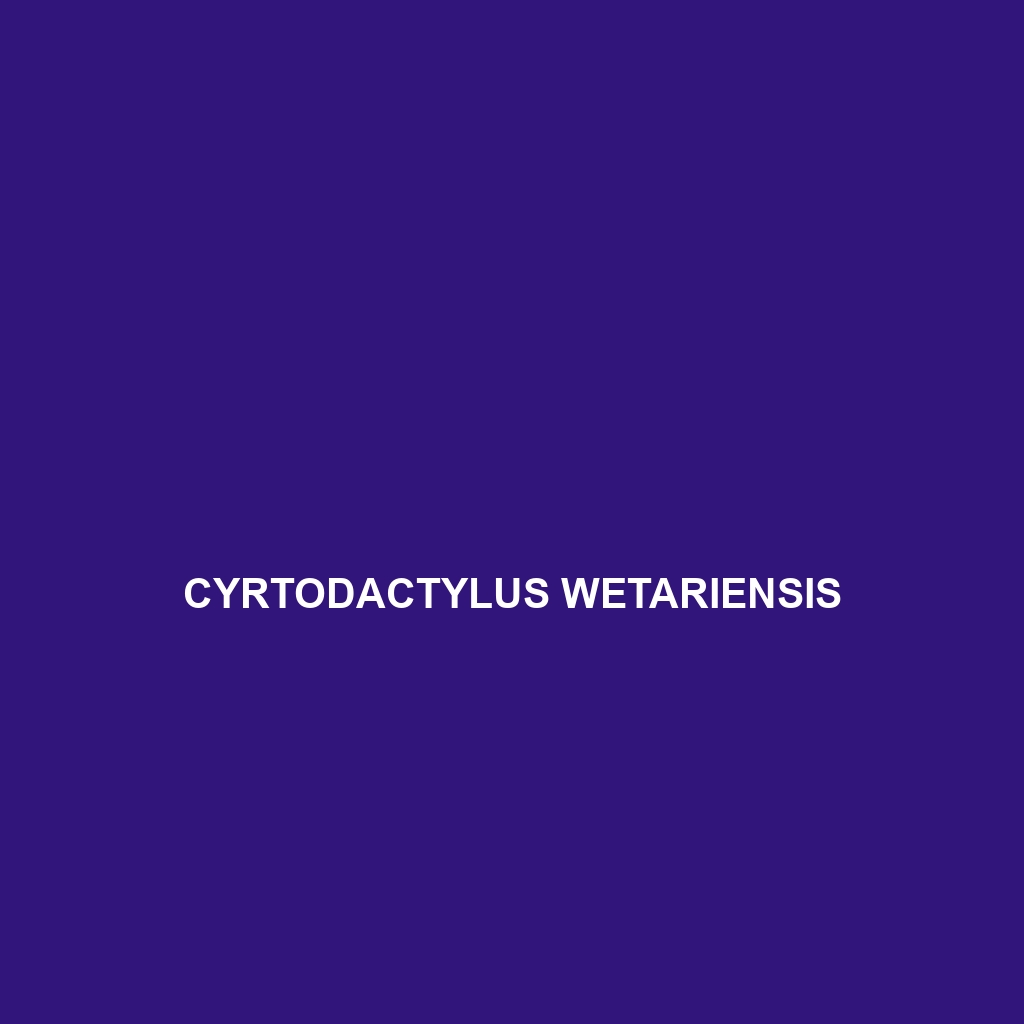Common Name: Cyrtodactylus wetariensis
Scientific Name: Cyrtodactylus wetariensis
Habitat:
Cyrtodactylus wetariensis is primarily found in the lush tropical forests of the Wetar Island group in Indonesia. This gecko thrives in moist, humid environments often characterized by rich vegetation and rocky outcrops, providing ample hiding spots and hunting grounds. The species has adapted to live in both primary and secondary forests, favoring areas with abundant leaf litter and fallen logs that support its lifestyle.
Physical Characteristics:
This species of gecko typically measures between 8 to 12 centimeters in length. Cyrtodactylus wetariensis exhibits a distinctive color pattern with shades of brown and tan, which aids in camouflage among the forest floor debris. Its flat body shape and elongated limbs are adapted for climbing and maneuvering through its arboreal habitat. Notable features include well-defined tubercles on its skin and large, prominent eyes that enhance its night vision.
Behavior:
Cyrtodactylus wetariensis is primarily nocturnal, exhibiting heightened activity during the nighttime hours when it emerges to hunt for food. This gecko is known for its inquisitive nature and agile movement, often seen climbing trees and foraging among leaves. Territorial displays include body posturing and vocalizations to ward off intruders, which makes them an intriguing subject for herpetologists and reptile enthusiasts alike.
Diet:
The diet of Cyrtodactylus wetariensis consists mainly of small insects, including crickets, beetles, and moths. This insectivorous diet equips the species to maintain a balance within its ecosystem by controlling pest populations. The gecko uses its keen eyesight and swift reflexes to capture prey, utilizing ambush tactics to enhance its feeding success.
Reproduction:
Breeding for Cyrtodactylus wetariensis typically occurs during the rainy season, when environmental conditions are most favorable. Females lay clutches of 1 to 2 eggs in leaf litter or hidden crevices, where they are less vulnerable to predators. After an incubation period of approximately 60 days, hatchlings emerge fully formed, ready to begin their independent lives.
Conservation Status:
Currently, Cyrtodactylus wetariensis is classified as vulnerable by the International Union for Conservation of Nature (IUCN). Habitat loss due to deforestation and land conversion poses significant threats to its population. Conservation efforts are crucial to preserving its natural habitat and preventing further decline.
Interesting Facts:
One fascinating fact about Cyrtodactylus wetariensis is its ability to change color slightly depending on the surroundings, enhancing its camouflage. Additionally, this species has a surprisingly long life span for a gecko, with individuals living up to 10 years in the wild under ideal conditions.
Role in Ecosystem:
Cyrtodactylus wetariensis plays a vital role in its ecosystem as both predator and prey. By feeding on insects, it helps regulate insect populations, contributing to the balance of its habitat. Furthermore, as a food source for larger predators, this gecko is integral to the food web, showcasing the interconnectedness of the rainforest ecosystem.
